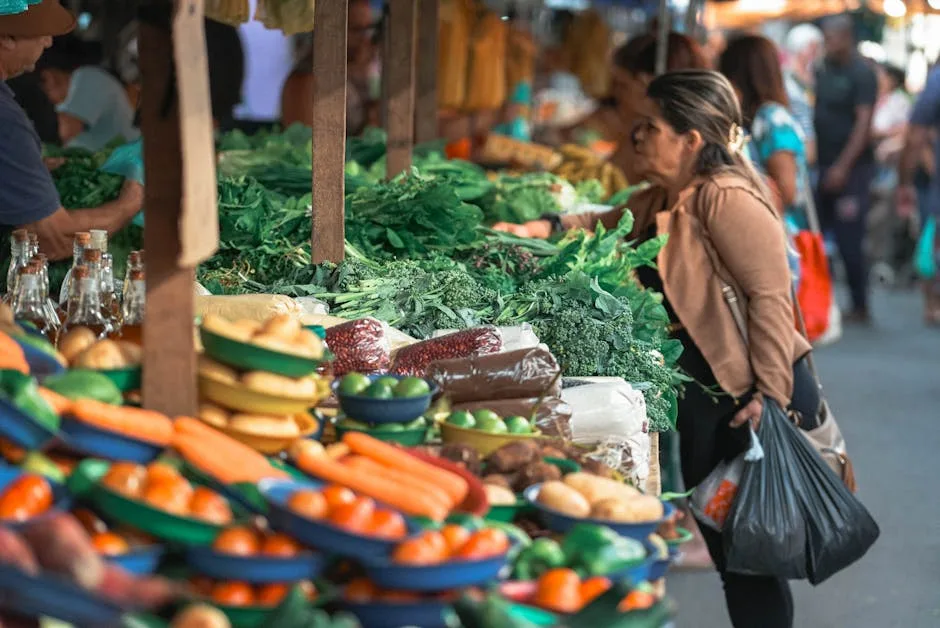Introduction to Brazil’s Tropical Climate
Brazil, with its vast expanse of over 8.5 million square kilometers, is a country marked by a diverse and complex climate system. This geographical behemoth stretches from the equator in the north to just below the Tropic of Capricorn, encompassing a wide range of climatic conditions. One of the defining characteristics of Brazil’s climate is its tropical nature, which influences weather patterns and seasonal variations across the country.
The country’s proximity to the equator means that much of Brazil experiences tropical weather, characterized by high temperatures and significant rainfall throughout the year. However, Brazil’s climate is not monolithic. The immense size and varied topography contribute to distinct climatic zones that offer unique weather experiences. These zones include equatorial, tropical, semi-arid, highland tropical, and subtropical climates, each defined by specific geographical and meteorological factors.
The equatorial climate, prevalent in the Amazon Basin, is marked by hot and humid conditions with abundant rainfall, fostering a lush, dense rainforest. The tropical climate, common in central and coastal regions like Rio de Janeiro and Salvador, features a wet and dry season, with high temperatures year-round. In contrast, the semi-arid climate of the northeast interior, such as in the Sertão region, experiences lower rainfall and higher temperatures, leading to more arid conditions.
Moving towards the highlands, the highland tropical climate found in places like Brasília and Belo Horizonte offers moderate temperatures and distinct wet and dry seasons, influenced by altitude. Lastly, the subtropical climate in the southern regions, including cities like São Paulo and Curitiba, sees more temperate conditions with cooler winters and warm summers, reflecting a greater seasonal variation.
This climatic diversity not only shapes the natural landscapes of Brazil but also influences the lifestyle and activities of its inhabitants. Understanding these climatic zones is essential for anyone planning to travel through Brazil, as it helps in preparing for the varying weather conditions one might encounter.
Understanding Brazil’s Seasons
Brazil’s climate is as diverse as its landscapes, influenced by the vast geographic spread and proximity to the equator. The country experiences four distinct seasons: summer, autumn, winter, and spring, each presenting unique weather patterns and temperature ranges. However, the impact of these seasons varies significantly between the northern and southern regions.
In the northern part of Brazil, which lies close to the equator, the seasonal variations are less pronounced. Here, temperatures remain consistently warm throughout the year, typically ranging from 25°C to 35°C (77°F to 95°F). The primary distinction in this region is between the wet and dry seasons rather than the traditional four seasons. The wet season, usually from December to May, brings heavy rainfall and high humidity, while the dry season, from June to November, is characterized by relatively lower humidity and less precipitation.
Conversely, the southern region of Brazil experiences more defined seasonal changes. Summer, from December to February, sees temperatures soaring from 25°C to 40°C (77°F to 104°F), making it the hottest time of the year. Autumn, spanning March to May, involves a gradual cooling, with average temperatures ranging from 18°C to 25°C (64°F to 77°F). Winter, occurring from June to August, is notably cooler, with temperatures dropping to between 10°C and 20°C (50°F to 68°F), and in some high-altitude areas, even lower. Finally, spring, from September to November, marks a transition period with temperatures rising again, averaging between 20°C and 30°C (68°F to 86°F).
The country’s vastness means that travelers must consider these regional climatic differences when planning their trips. Whether basking in the tropical warmth of the north or experiencing the distinct seasonal shifts of the south, understanding Brazil’s seasonal variations is essential for an optimal travel experience.
Summer (December to March): Embracing the Heat
Summer in Brazil, spanning from December to March, is characterized by soaring temperatures and heightened humidity, particularly in the coastal regions. As the mercury rises, travelers need to be well-prepared to handle the intense tropical climate. Staying hydrated is paramount; it’s advisable to carry a reusable water bottle and drink water regularly. Sunscreen becomes an essential accessory during this period to protect against the strong UV rays. Lightweight, breathable clothing made of natural fabrics can help in coping with the heat, making the experience more enjoyable.
Brazil’s summer season invites visitors to explore its vibrant landscape, with Rio de Janeiro standing out as a premier destination. The city’s famous beaches, such as Copacabana and Ipanema, offer sunbathing, surfing, and a chance to mingle with locals. The effervescent atmosphere of Rio de Janeiro extends to its nightlife, where samba rhythms and street parties keep the spirit of summer alive.
One of the most iconic events during the Brazilian summer is the Carnival, usually held in February. This world-renowned festival features parades, samba dancing, and elaborate costumes, drawing tourists from around the globe. The Carnival’s pulsating energy and colorful displays are a testament to Brazil’s rich cultural heritage, providing an unforgettable experience.
Beyond Rio, other coastal cities like Salvador and Recife also offer unique summer experiences. Salvador, known for its Afro-Brazilian culture, presents a blend of historical architecture and lively music scenes. Recife, with its beautiful beaches and vibrant festivals, offers a more relaxed yet equally captivating ambiance.
For those looking to explore beyond the coastline, the Amazon Rainforest presents a different facet of Brazil’s tropical climate. While the humidity can be more pronounced, the lush greenery and diverse wildlife offer an immersive natural adventure.
Whether basking on sandy shores or dancing through the streets during Carnival, Brazil’s summer season provides a myriad of activities and destinations that embrace the heat and celebrate the country’s dynamic culture. Proper preparation and awareness of the climate can ensure a comfortable and memorable journey through this tropical paradise.
Autumn (March to June): A Time of Transition
Autumn in Brazil, spanning from March to June, marks a period of transition as temperatures gradually cool and the intensity of rainfall diminishes across various regions. This season offers a unique travel experience, characterized by a blend of the lingering warmth of summer and the emerging crispness of impending winter. Understanding the climate nuances during these months can enhance your travel itinerary and ensure a comfortable journey.
As temperatures begin to drop, albeit gradually, it is prudent to pack versatile clothing. Layered outfits are particularly beneficial, allowing travelers to adapt to the fluctuating weather conditions. Mornings and evenings may require light jackets or sweaters, while daytime temperatures often remain warm enough for standard summer attire. Ensuring you have a mix of both will keep you comfortable as you navigate different regions and their microclimates.
One of the prime attractions during Brazil’s autumn is the Pantanal, the world’s largest tropical wetland. This season is ideal for wildlife enthusiasts, as the reduced rainfall results in lower water levels, making it easier to spot animals congregating around the remaining water sources. The Pantanal offers unparalleled opportunities for viewing jaguars, capybaras, caimans, and an array of bird species in their natural habitats.
Additionally, autumn presents a chance to explore Brazil’s tourist spots with fewer crowds. Destinations such as Rio de Janeiro, São Paulo, and Salvador see a decrease in tourist traffic, providing a more relaxed and enjoyable experience. The cooler yet still pleasant weather supports outdoor activities such as hiking, city tours, and beach visits, without the overwhelming heat of summer or the peak tourist influx.
For those seeking a blend of cultural immersion and natural exploration, autumn in Brazil offers the perfect balance. With mindful packing and a well-planned itinerary, you can fully appreciate the diverse landscapes and rich biodiversity that Brazil has to offer during this transitional season.
Winter (June to September): Mild and Pleasant
During the winter months from June to September, Brazil offers a unique and enjoyable experience for travelers. The weather across most of the country is mild and pleasant, providing an inviting atmosphere for exploration and relaxation. In the southern regions, including cities such as Porto Alegre and Curitiba, temperatures can drop considerably, necessitating warmer clothing, especially during the evenings. It is advisable to pack layers to accommodate the varying temperatures throughout the day.
In contrast, the northern and coastal areas, including popular destinations like Rio de Janeiro and Salvador, maintain a more temperate climate, with daytime temperatures often hovering around a comfortable range. The winter season in these areas is characterized by fewer tourists, offering a more peaceful and intimate travel experience. The lack of intense heat also makes it an ideal time to explore outdoor attractions, such as national parks and historical sites.
Winter in Brazil is also a time to immerse oneself in local culture and festivities. June marks the beginning of the Festas Juninas, or June Festivals, which are celebrated with fervor across the country. These festivals feature traditional music, dance, and cuisine, providing an authentic cultural experience. Travelers visiting the southern states will find a plethora of local events, including food fairs and folkloric celebrations that highlight the rich heritage of the region.
For those seeking an escape from the typical winter chill, Brazil’s tropical climate during this season offers the perfect respite. Whether basking in the mild temperatures of the coastal regions or enjoying the cooler, crisp air of the southern states, winter in Brazil presents a diverse array of activities and experiences. Packing appropriately and embracing the local customs will undoubtedly enhance any travel itinerary during this delightful season.
Spring (September to December): Rebirth and Renewal
Spring in Brazil, spanning from September to December, is a season of rebirth and renewal. During this period, the country gradually transitions from the cooler months into warmer temperatures. This season also marks the return of more significant rainfall, especially in the Amazon and central regions, nurturing the vibrant ecosystems that thrive in these areas.
The Amazon rainforest, in particular, comes alive with a burst of activity as plants and animals respond to the increased moisture. Travelers visiting these regions should be prepared for the humidity and frequent downpours by packing waterproof gear and light clothing. Light, breathable fabrics will help manage the warm, often muggy conditions while keeping travelers comfortable as they explore.
Spring is an excellent time to witness Brazil’s diverse flora and fauna. National parks such as Chapada dos Veadeiros and Pantanal offer unique opportunities to see blooming flowers and an array of wildlife. These parks are teeming with life, making them ideal for nature enthusiasts and photographers looking to capture the beauty of Brazil’s natural landscapes. Guided tours through these areas can provide insightful information about the local ecosystems and the species that inhabit them.
In addition to natural attractions, springtime in Brazil is rich with cultural events and festivals. The warmer weather and blooming environment create a perfect backdrop for various celebrations. Cities across the country host events that showcase Brazil’s vibrant culture, including music festivals, food fairs, and art exhibitions. Participating in these events allows travelers to immerse themselves in the local culture, providing a well-rounded experience of Brazil during this dynamic season.
Overall, spring in Brazil offers a harmonious blend of natural beauty and cultural richness. Whether exploring national parks or engaging in festive activities, travelers will find that this season perfectly encapsulates the essence of renewal and growth. With appropriate preparations, including suitable clothing and a willingness to embrace the occasional rain shower, springtime in Brazil promises an unforgettable journey.
Regional Climate Variations
Brazil’s vast geographical expanse results in a diverse array of climate zones, each offering unique experiences for travelers throughout the year. Understanding the regional climate variations can significantly enhance your travel plans, ensuring you make the most of your visit to this vibrant country.
The Amazon region, located in northern Brazil, is characterized by an equatorial climate. This area experiences high temperatures and humidity levels year-round, with average temperatures hovering around 27°C (80°F). The Amazon receives substantial rainfall, especially from December to May, creating lush, dense rainforests. Travelers visiting this region should prepare for wet conditions and rich biodiversity, making it ideal for eco-tourism and river cruises.
Moving to the central part of Brazil, the Cerrado region features a tropical savanna climate, marked by distinct wet and dry seasons. The wet season runs from October to April, bringing heavy rainfall, while the dry season, from May to September, is characterized by minimal precipitation and cooler temperatures. This climate is perfect for exploring national parks, such as Chapada dos Veadeiros, and experiencing the unique flora and fauna adapted to these conditions.
In the Northeast, the semi-arid climate dominates, particularly in the Sertão region. This area experiences high temperatures year-round, with limited rainfall. The dry season can be harsh, but the coastal areas, such as Bahia and Pernambuco, benefit from a more temperate climate with cooling sea breezes. Visitors can enjoy beautiful beaches and vibrant cultural festivals, especially during the relatively wetter months from March to July.
The Southeast region, encompassing major cities like São Paulo and Rio de Janeiro, enjoys a highland tropical climate. Summers (December to March) are warm and humid with frequent rainfall, while winters (June to September) are cooler and drier. This climate supports diverse activities, from sunbathing on Copacabana Beach to hiking in the Serra da Mantiqueira mountains.
Lastly, the southern part of Brazil experiences a subtropical climate. This region, which includes cities like Porto Alegre and Curitiba, has more defined seasons compared to the rest of the country. Winters can be quite cool, with temperatures occasionally dropping below freezing, while summers are warm and humid. The region’s climate is well-suited for wine tourism in the Serra Gaúcha and exploring the Iguaçu Falls.
Travel Tips for Each Season
When planning a trip to Brazil, understanding the nuances of its tropical climate can greatly enhance your travel experience. Each season brings its own unique weather patterns, and being prepared can make all the difference. Here are some practical travel tips for navigating Brazil’s diverse climate across different seasons.
In the summer months (December to February), temperatures can soar, especially in the northern regions. It’s essential to pack light, breathable clothing to stay comfortable in the heat. Sunglasses, hats, and high-SPF sunscreen are indispensable for protecting yourself from the intense sun. Staying hydrated is crucial, so always carry a water bottle. Due to the higher risk of insect-borne diseases, particularly in the Amazon and Pantanal regions, it’s wise to bring insect repellent and consider vaccinations for yellow fever and other relevant diseases.
Autumn (March to May) sees a slight drop in temperature, making it an ideal time for outdoor activities. However, sudden rain showers are common, so packing a lightweight rain jacket or umbrella is advisable. This season is perfect for hiking and exploring Brazil’s numerous national parks, but always check the local weather forecasts before heading out to ensure safe and enjoyable excursions.
Winter (June to August) in Brazil varies greatly depending on the region. While the southern areas can experience cooler temperatures, the north remains warm. Layered clothing is recommended to adapt to temperature changes throughout the day. In the higher altitudes, such as São Paulo and Rio de Janeiro, mornings and evenings can be chilly, so a light jacket or sweater will be useful. Winter is also a great time for cultural activities and enjoying Brazil’s vibrant city life.
Spring (September to November) is characterized by moderate temperatures and blooming flora. This is an excellent time for beach vacations and exploring coastal areas. As the weather can still be unpredictable, it’s prudent to pack both summer wear and a few warmer items. Again, keeping an eye on weather forecasts can help you plan your daily activities more effectively.
Regardless of the season, always be prepared for sudden changes in weather by regularly checking local forecasts. This vigilance ensures that you can adjust your plans and enjoy all that Brazil has to offer without any unexpected disruptions.





